After our longest passage to date (3181nm in 3 weeks, 1 day and 22 hours), the island of Hiva Oa was a welcome sight. Hiva Oa is one of the twelve islands which make up the Marquesas Islands. They are rugged and mountainous and the harbours are generally nestled in the remains of volcanic craters.
Once safely anchored, we went ashore, where we were met by ARC yellowshirt Rachael. She welcomed us with a smiling face, fresh fruit and garlands of fragrant flowers. We were so pleased to be ashore!
Laurent, the ARC agent, was also on hand to help us with the check in, ensuring that the relevant forms were completed and escourting us to the gendarmerie to clear immigration and get our passports stamped.
On arriving in a new country, a priority for us is to buy a local SIM card for data. This then gives us chance to catch up with the world outside and, more importantly on this passage, to organise the buying of new sails. The visit to the village of Atuona was also our first glimpse of Pacific prices….everything here has to be shipped in and consequently it is very expensive.
After completing our jobs in town, we decided to walk back to the anchorage, admiring the views as we went. It was a long walk and, after so long at sea, we were soon regretting our decision. Luckily for us, the Marquesans are a friendly people and before long someone had stopped and offered us a lift.
Once check in was completed, some basic provisioning done and crucial internet work completed, we set sail for Tahuata, a smaller island to the south west of Hiva Oa. Here we dropped anchor in Hanamoenoa Bay to spend a few nights soaking in the scenery.
It was not all chilling out though, as we needed to measure our sails to enable us to order new ones. This was not as easy as it sounds, especially with such big sails – our genoa is 15m long. We dropped the genoa, folded it up and set off in the dingy to the beach, in hope of finding a space to lay it out. The first challenge was getting ashore. With the waves pounding on to a steeply shelving beach, it was all about timing it right to avoid a drenching. Once ashore, we managed to find an open hut which was almost big enough and set about collecting measurements.
A productive day was completed by a beach BBQ with other ARC boats to share stories of the crossing and discuss future sail plans.
Before leaving Hanamoenoa Bay, we snorkelled a manta ray bay feeding station. We were stunned to be able to swim alongside twelve of these magnificent creatures, their large oval mouths open to sieve the plankton from the water. Unfortunately, we had no camera with us to document this tremendous experience. Aaaaah!
Leaving Tahuata, we set sail north to Nuka Hiva 85nm away. Due to our damaged sails and light winds, this turned about to be a 17 hour overnight motor sail to arrive in Nuku Hiva in the morning light.
We were blown away by the impressive anchorage at Taioha’e – a large sweeping bay set in the remains of a volcanic crater. Mountainous walls rose steeply from water, surrounding the bay on three sides. The small town was perfect. A single road ran along the water’s edge with two supermarkets, still small, but the best for a long while. They even had fresh baguettes daily -such a treat! The other treat, after the long passage, was the variety of locally grown fruit and vegetables. The daily market was superb and it was there that we were introduced to the delicious pamplemousse. This is a large grapefruit, bigger and sweeter than any we have had before – delicious. Whilst here, we also managed to be ashore early enough to buy freshly caught fish.
In the whole of the Marquesas Islands, we were welcomed with open arms by the people who all smiled and said bonjour or kaoha. Collette, from the tourist information office, was a fountain of knowledge and organised a superb welcome event for the rally.
The afternoon started with a welcome song and lays of fresh flowers. This was followed by freshly cut coconut and a demonstration of local crafts and skills. These included the many uses of a coconut, local wood carving and the opportunity to make our own fragrant flower garlands and bead necklaces.
The day was rounded up by a welcome meal in the community hall – A buffet of fish and vegetables with the centre piece of ground cooked pig. We were entertained by energetic dancing and we even got the chance to join in. I don’t think they will be signing us up any time soon.
Whilst at Nuku Hiva, we took an island tour with guide, Richard. The drive took us all over the small island and, at every corner we turned, we were treated to a stunning view. The people here have such a pride in their island and the streets and gardens are immaculate.
Richard was passionate about his home, its history and culture and spent the day sharing his knowledge with us. We were able to learn about so many of the traditions that had been lost when missionaries arrived at the islands, but are now thankfully being resurrected.
As part of our tour, we visited a small museum dedicated to the art of tattooing. It was so interesting to learn about the traditional processes and the symbols that were used. Richard told us that, once again, this knowledge had been lost and was only just being rediscovered.
Richard took us to visit several archaeological sites which had been unearthed to display what life was like over 1000 years ago. Stone buildings with straw roofs, ceremonial stone platforms and a scattering of carved tikis – increasingly, these ancient locations are being reconstructed and used in modern day festivals.
Finally, we were shown an enormous banyan tree. This huge tree was an impressive cascade of roots with sinster deep pits around its base. Banyan trees are considered to be portals into the spirit world and this was was an ancient burial site, the deep pits being used to keep captive the victims before they were eaten!
Richard told us that the tree had been an inspiration for the tree of life in the Avatar movie. you could see why.
Our last stop in the Marquesas Islands was Daniel’s Bay. Only a small bay, large enough for a handful of boats, but surrounded by sheer cliffs. It was such an impressive place to be. Whilst here, we walked through the sub tropical rainforest to the Vaipo Waterfall: a horse tail type fall with a drop height of 350m (1148′). It is supposedly one of the tallest in the world. Unfortunately, we were unable to see its splendour close up as it ran behind a huge cliff face. We had to be satisfied with a view from a distance.
After our walk we had an amazing lunch at what looked like a local house. Freshly caught fish cooked on the BBQ accompanied by deep fried breadfruit and green mango salad. This was followed by a large portion of fresh fruit and all washed down with homemade fruit juice. We definitely had our five a day that day!
When choosing information to post about, we tend to focus on the places that we visit, but those of you who own boats will know that life onboard is not just about these experiences. Cruising was once described to us as ‘fixing boats in exotic places’. This is so true!
Our huge job while in the Marquesas Islands was to repair our sails. We had managed to order new ones, but they would be delivered to Tahiti. This was still about 1000nm away. We knew that we would have to patch them to get there.
Due to the enormity of the job in hand, this would have been almost impossible to do on the boat. Collette was once again on hand and put us in touch with the local council. They kindly allowed us to use the community hall for the day. This was at no hire charge as long as we paid for the electric (about £35). The next challenge was the sewing. Our small domestic machine was not up to the task, so we borrowed a heavy duty Sailrite machine from another ARC boat. Transporting everything ashore took three trips in the dinghy and we then spent the whole day patching and sewing. By 8pm, we were exhausted, but had still only managed to do about half of the job. Several of the patches were too far away from the sail edge to sew with the machine. We had no option other than to hand sew the rest.
Our second repair day was spent by the beach with the genoa draped over a rope line, hand sewing zig zag stitch with our trusty speedy stitcher. I am not sure ‘speedy’ is the right word, we got up to 6 stitches a minute. From 9am until 5pm, we sat on both sides of the sail stitching on patches. It was another very long day, but I suppose that there are worst places to mend sails. Fingers crossed they will now last until Tahiti.
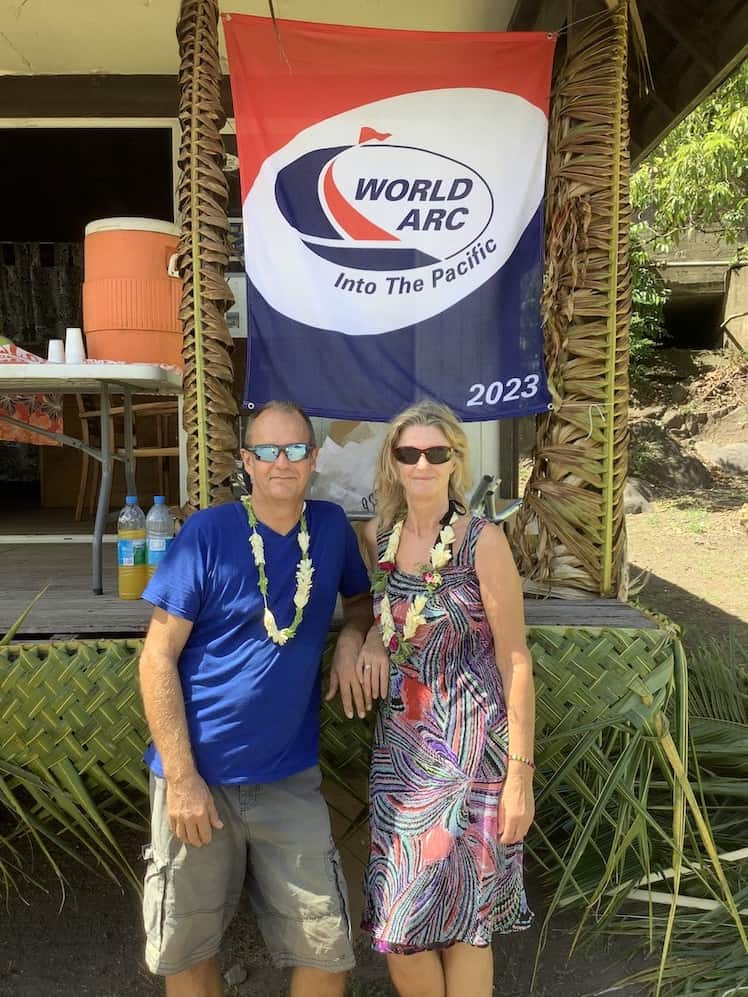

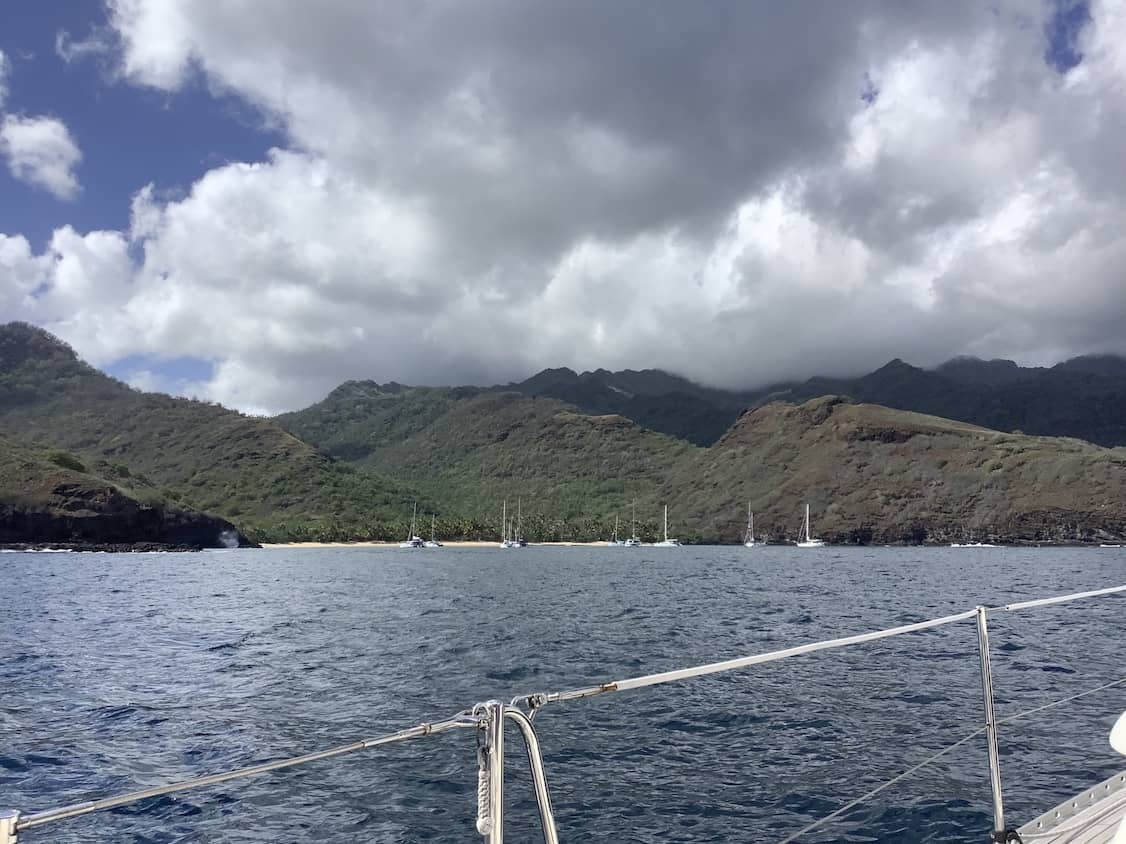
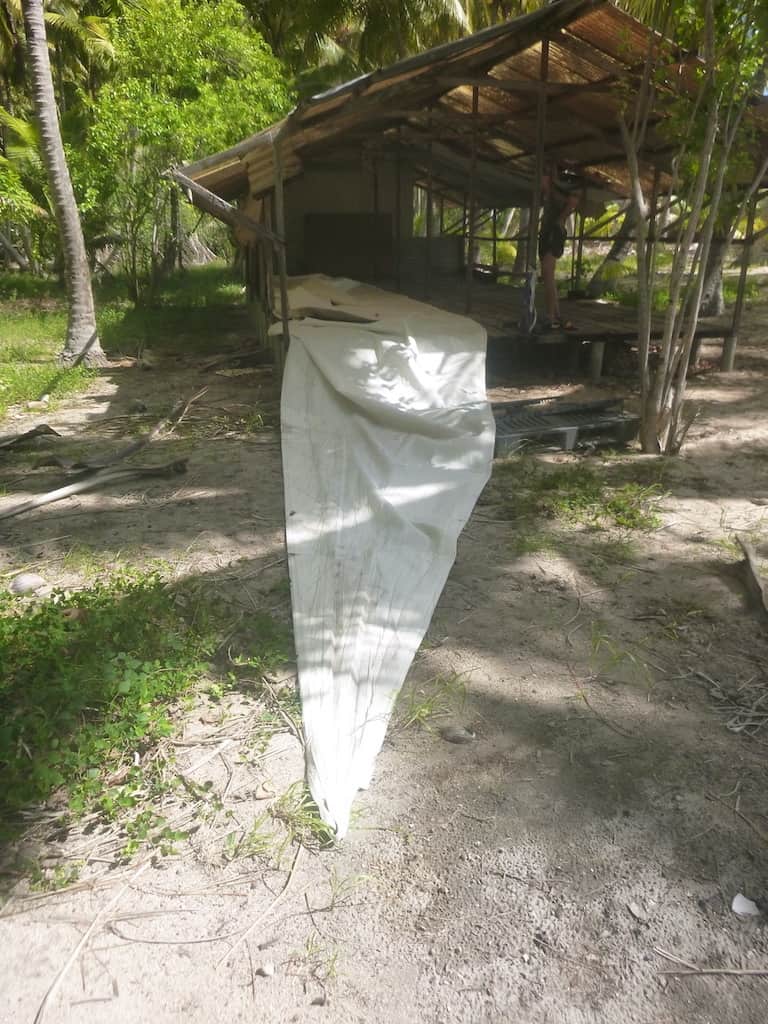
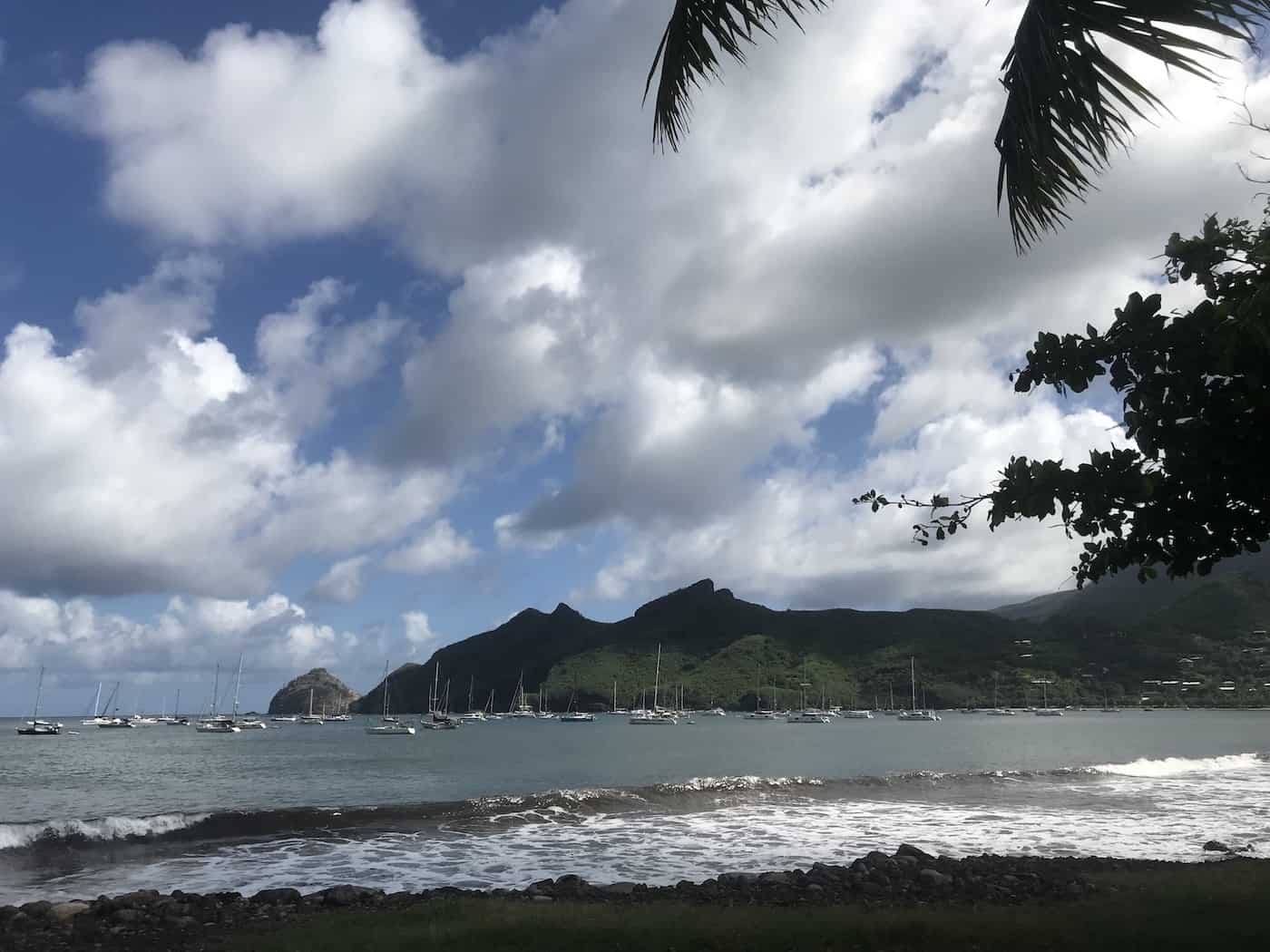

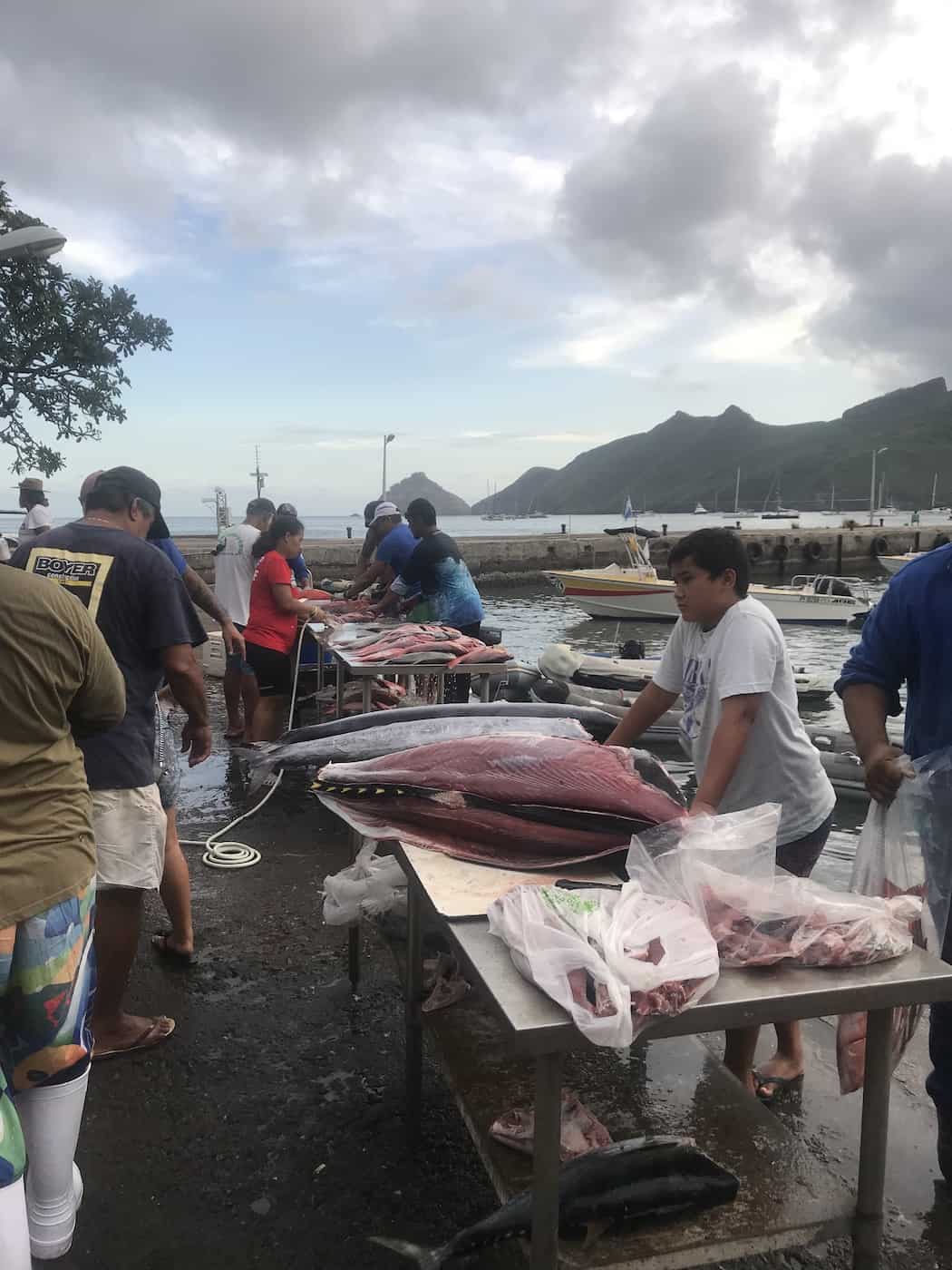
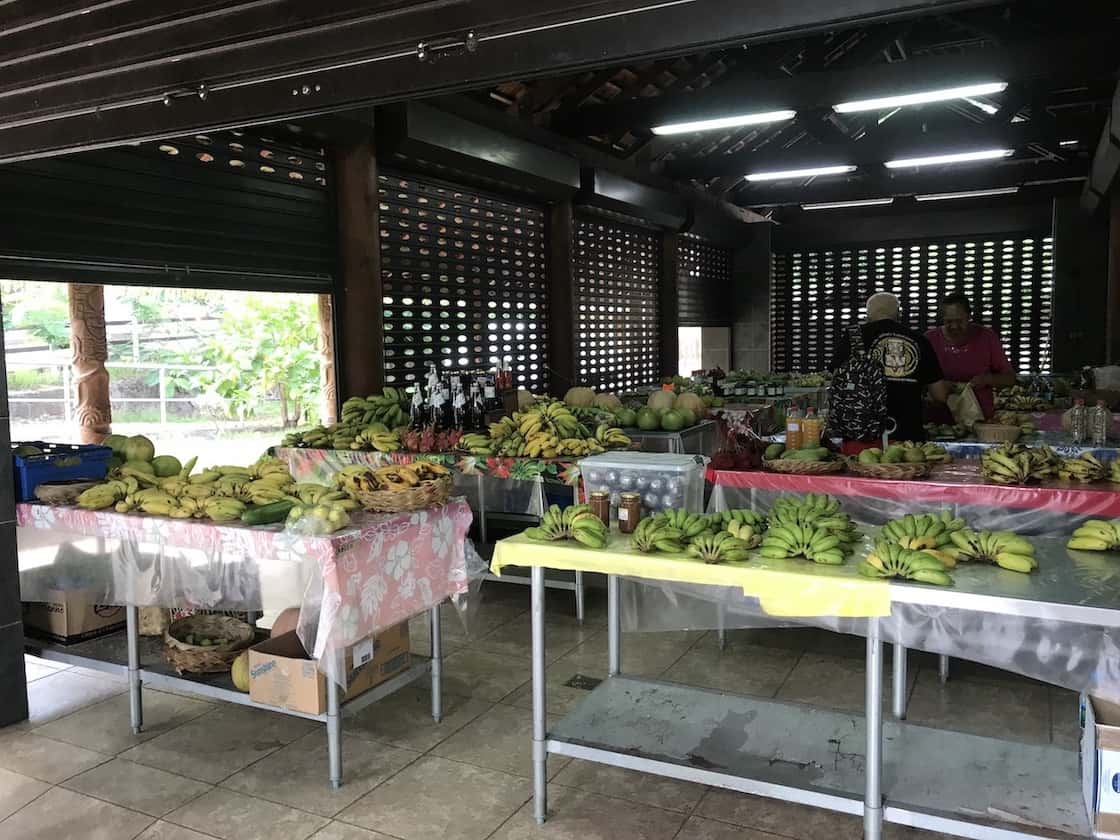

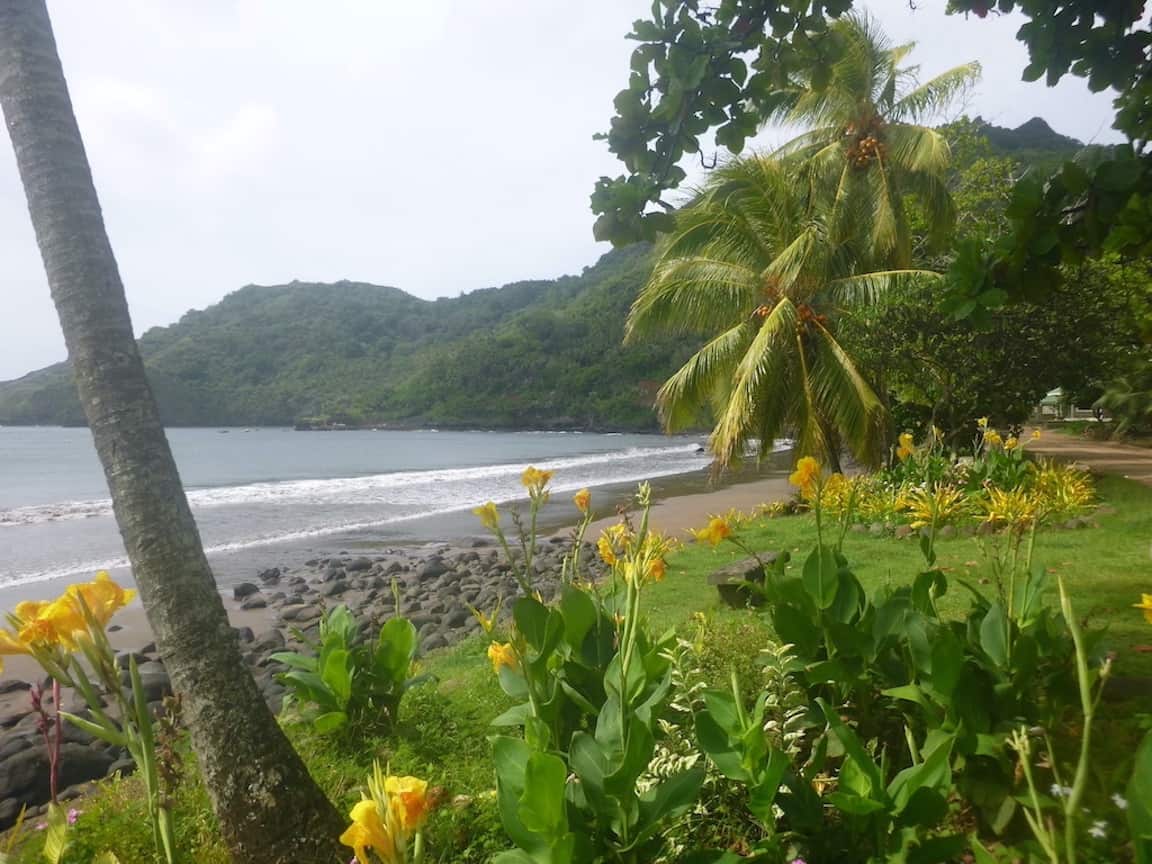
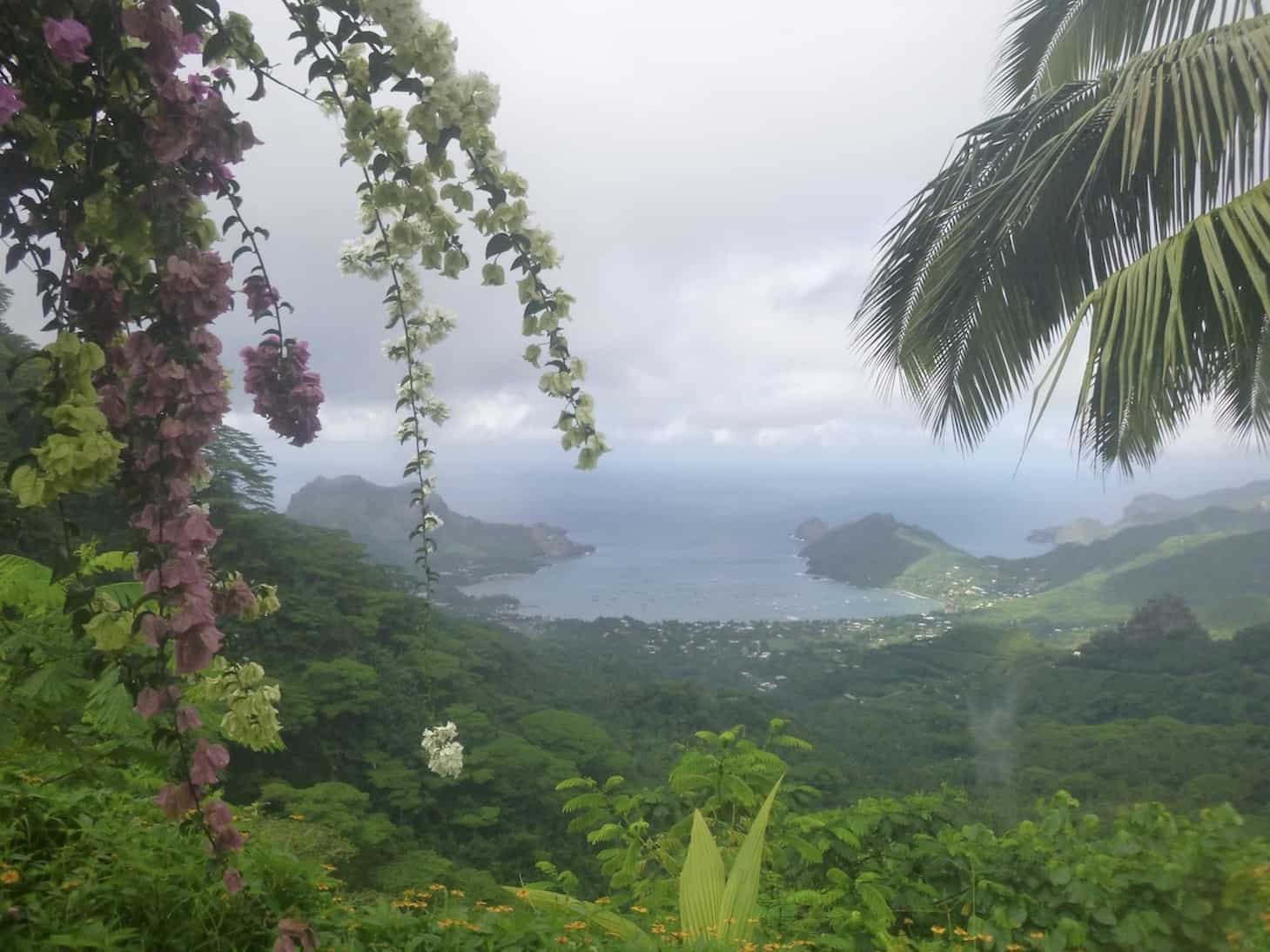
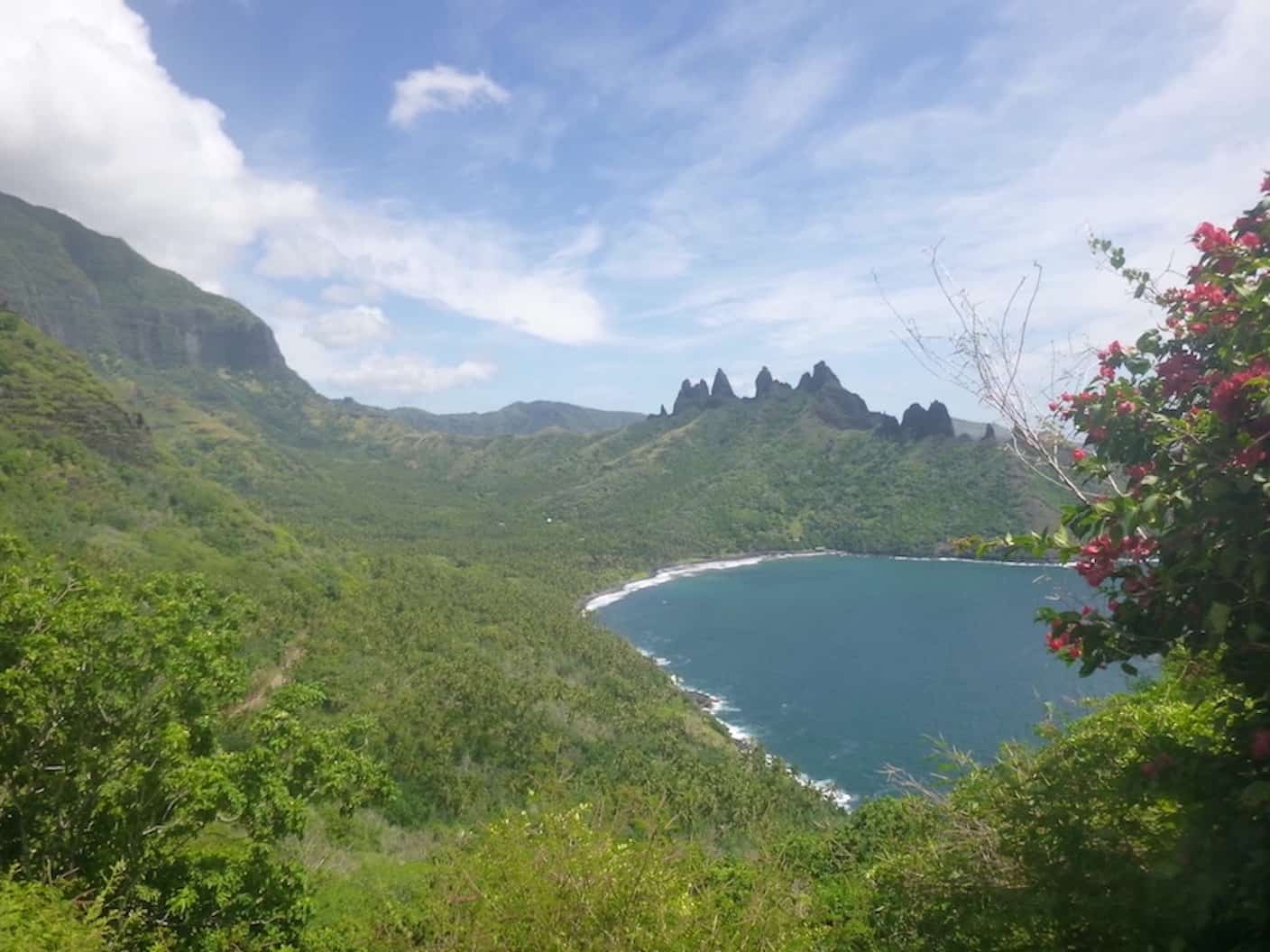
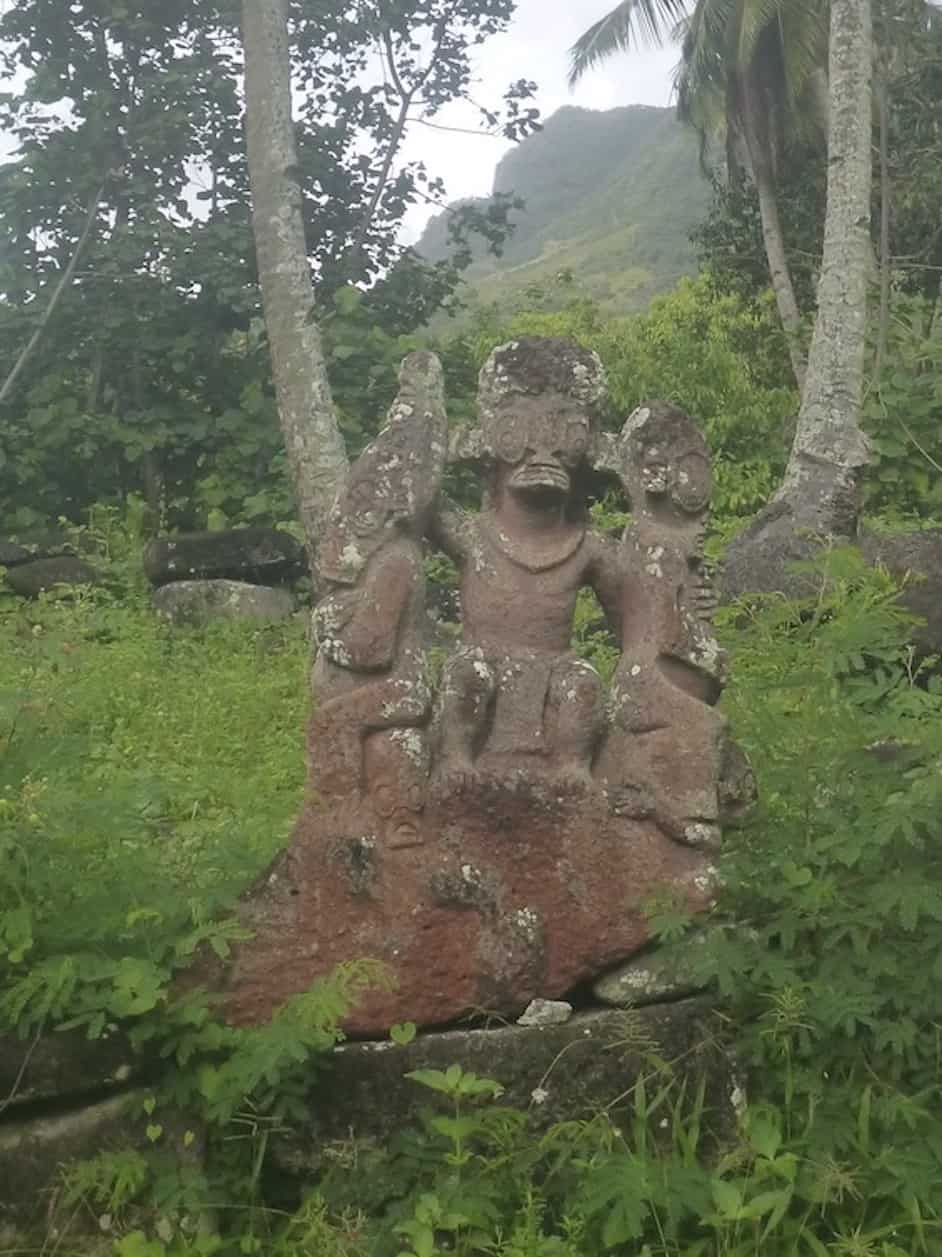

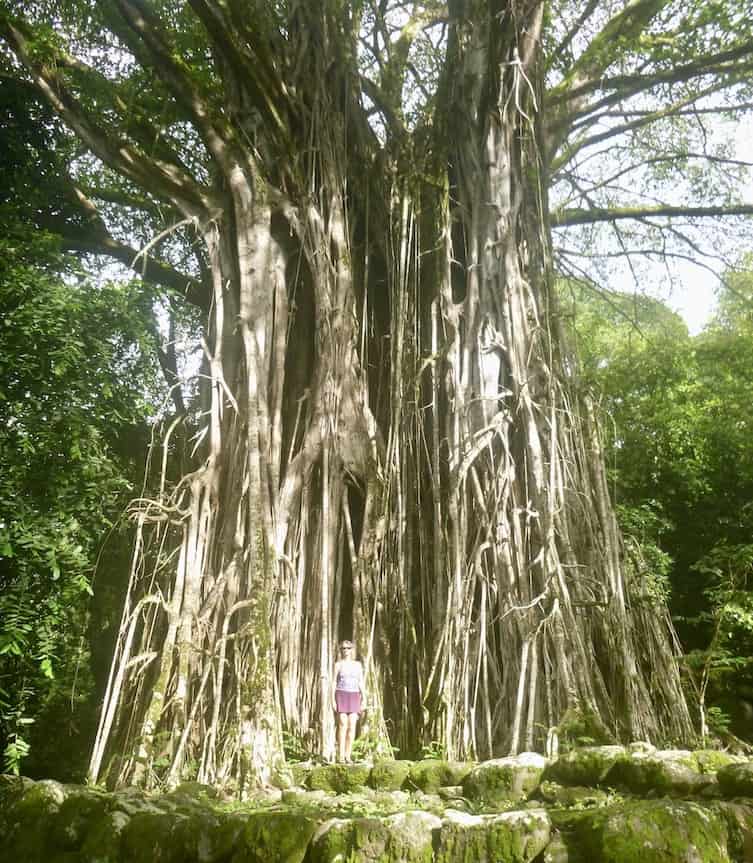


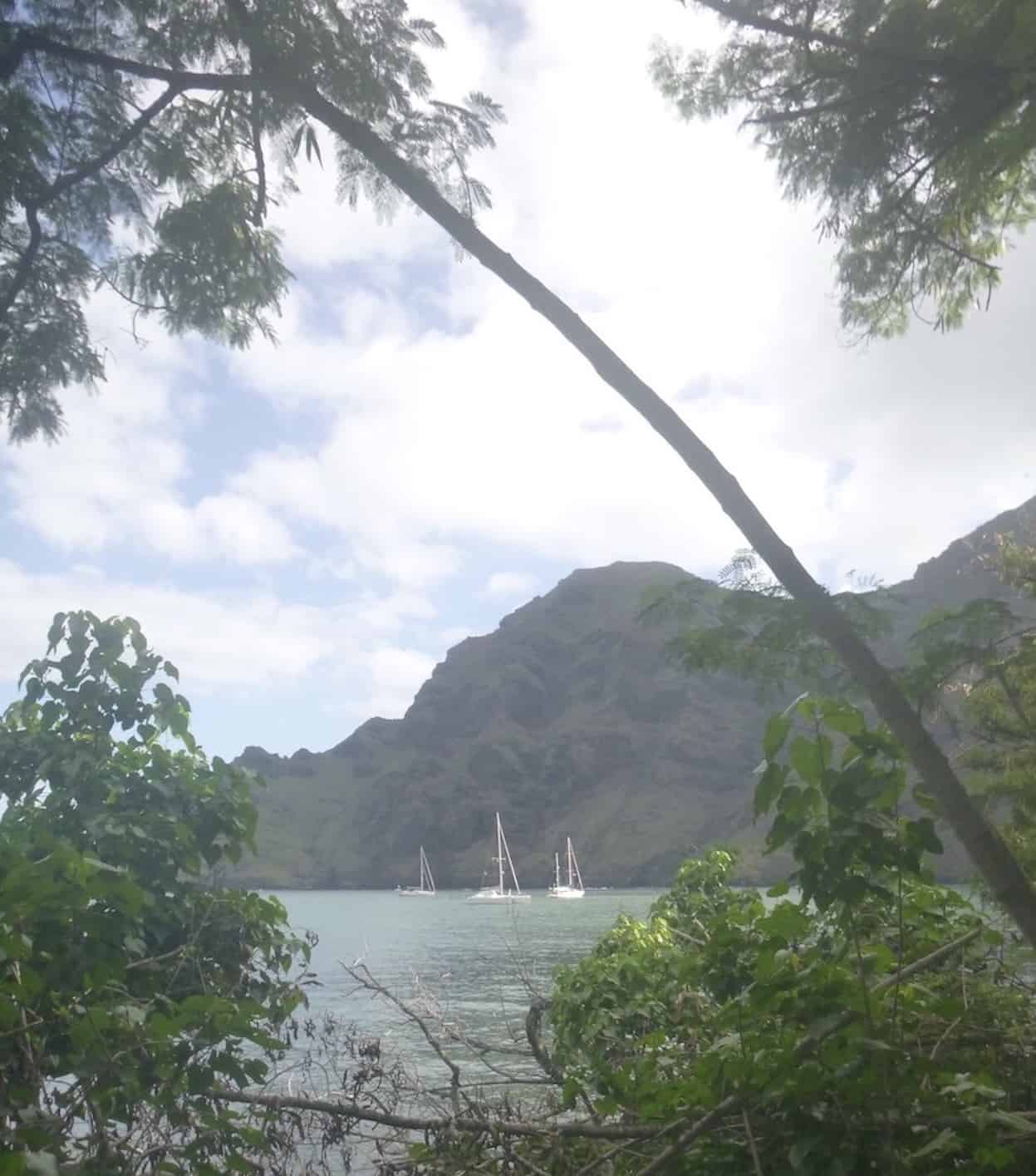
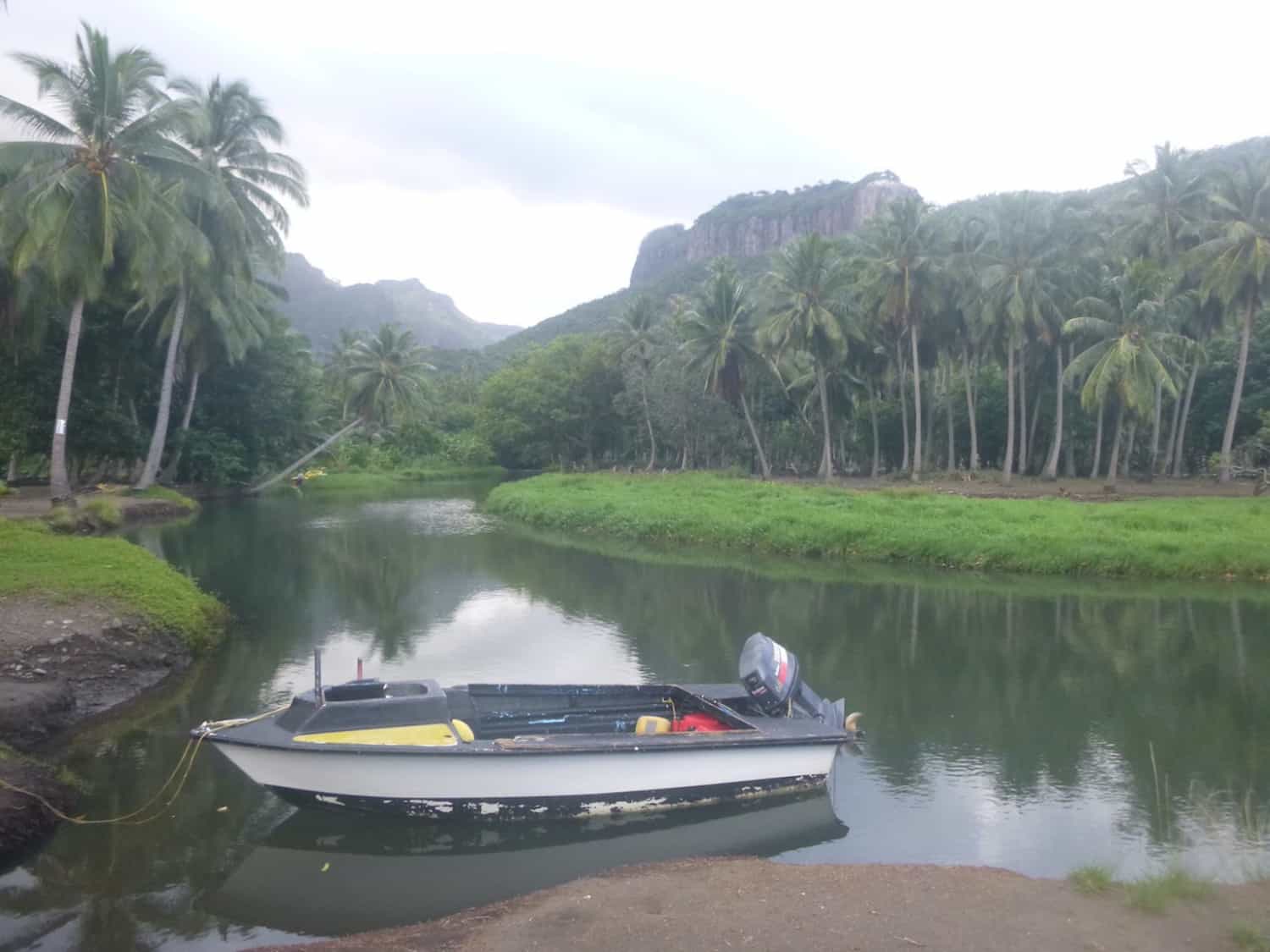


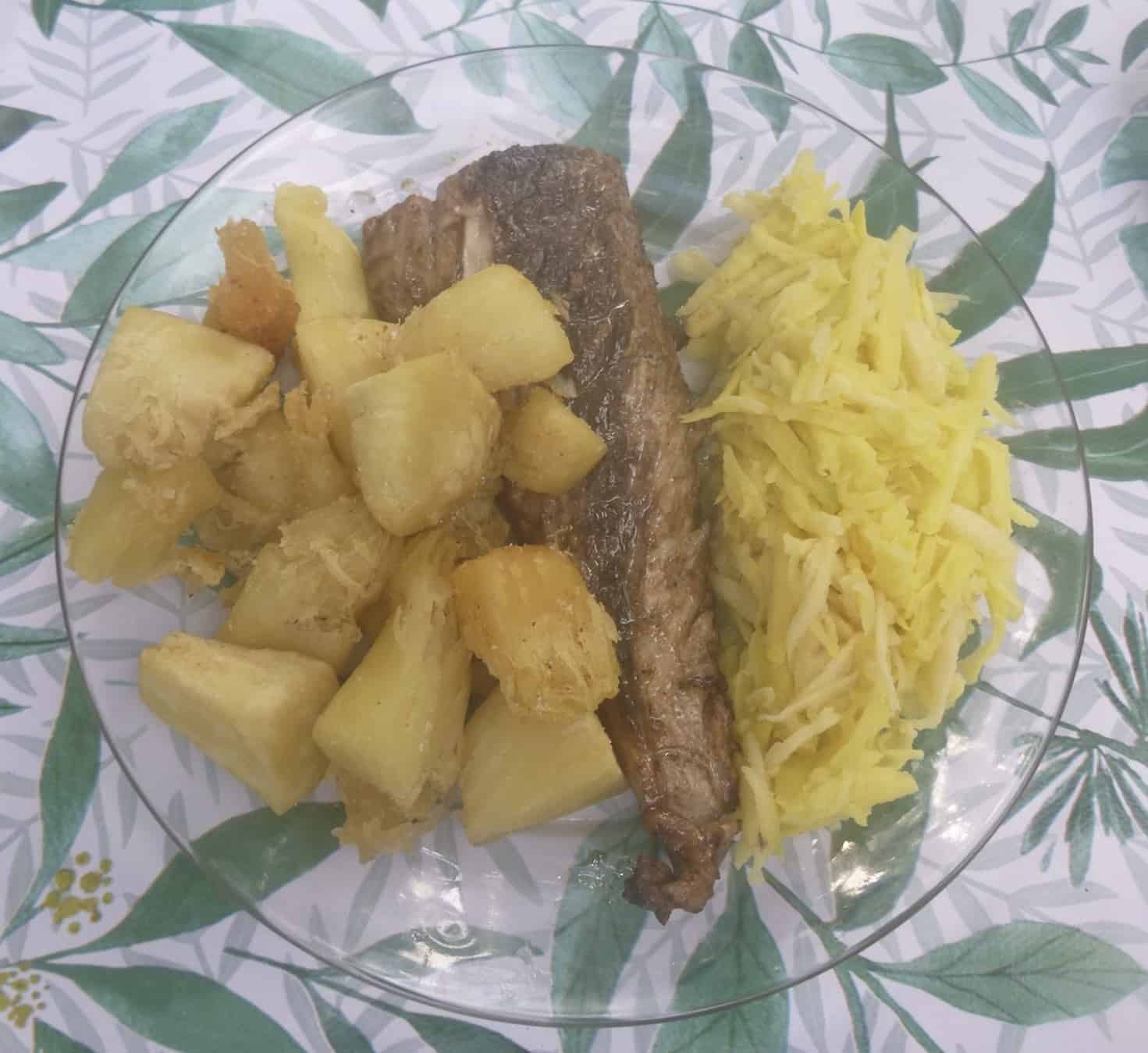

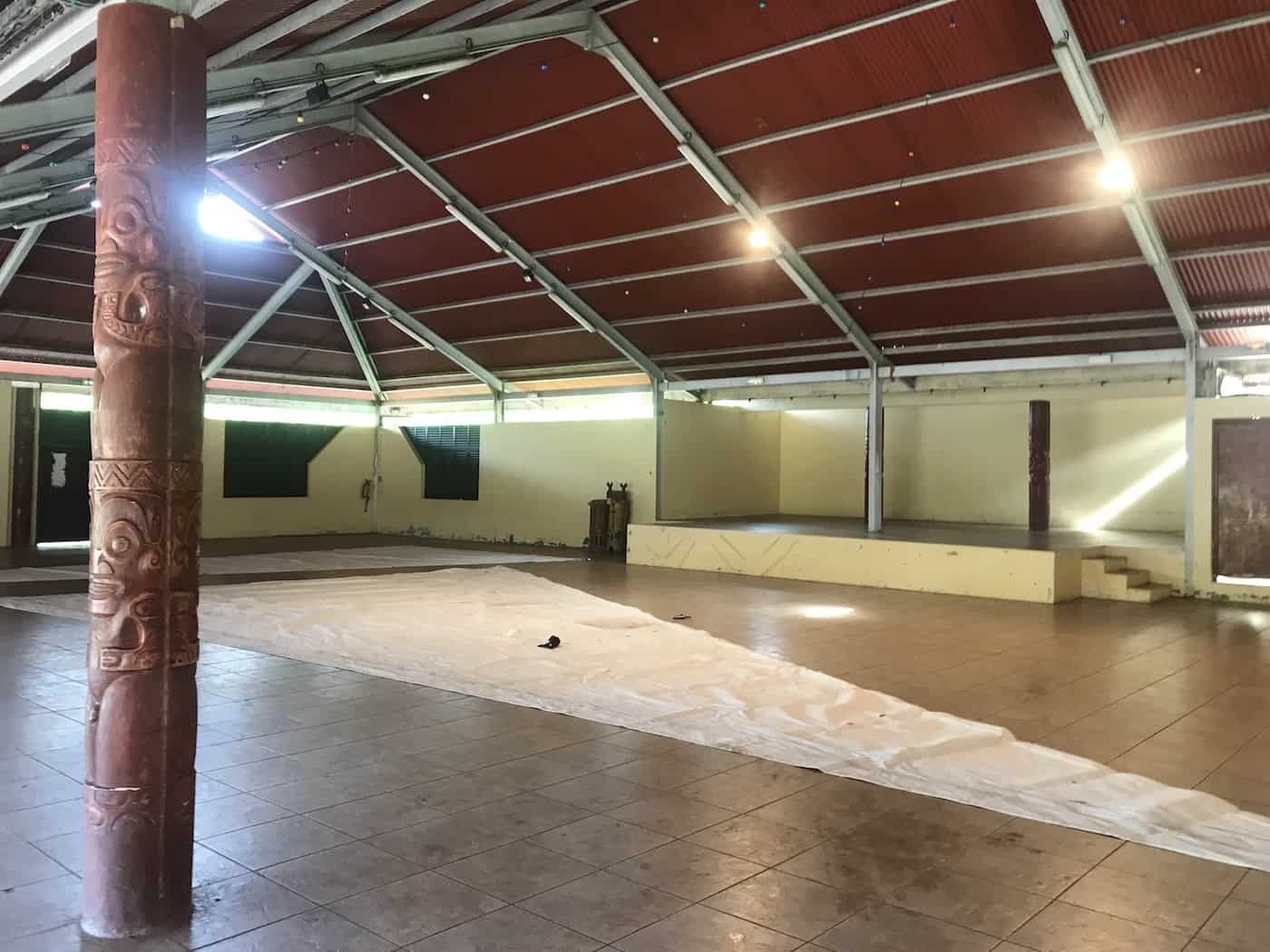

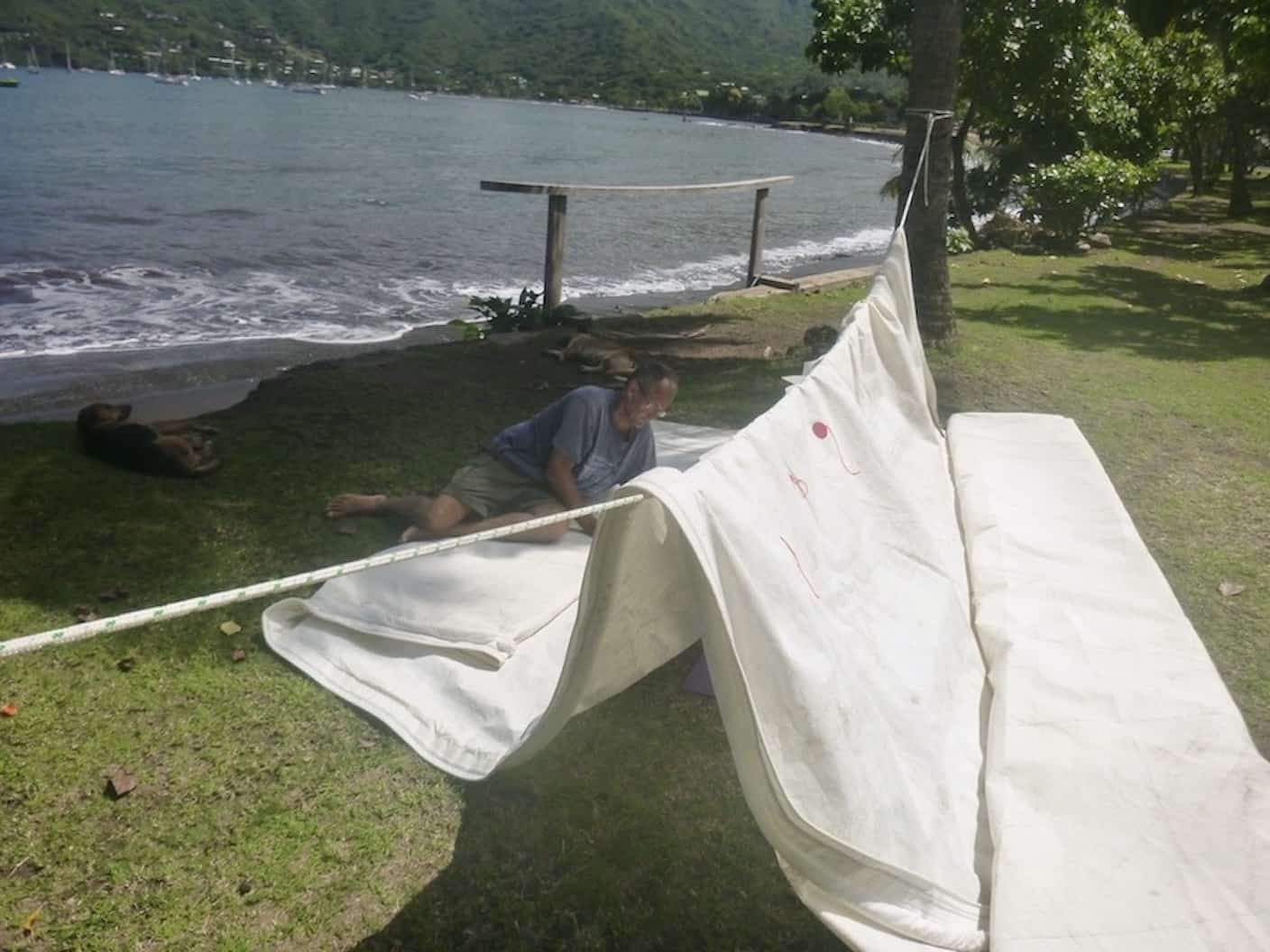
A pleasure to read you’re blog.
Good job with the sails 👍. I’m glad you also got in some sightseeing 😃.
Hi,
We really enjoyed our time in the Marquesas Islands especially in Nuka Hiva. It was stunning .
Hope you are both well .
X
So nice to read ! Without COVID we would have done the World ARC together. What a pity !
Great pictures – great adventures.
We are now in Formentera on the way to the Caribbean again.
Hi,
So good to hear from you. We watch your travels on Facebook and Instagram. Looks beautiful.
The World Rally has been amazing so far, but very quick! You should sign up for next time!
Take care
Xx
What great experiences in the Marquesas. I love the cultural dancing…you’ll have to keep the beat for each other and practise on the boat when you are bored! 🤣🤣 Even repairing the sails will be a lasting memory.
Hi,
Every day brings us a new experience! Some amazing and others more challenging. It is hard to believe that it is two years since we left the U.K.!
We are. Ow half way around the world….so more exciting adventures to come.
See you soon
X
Fantastic to read about your ARC adventures and impressive sailing distances. Love reading your travels/ cultural experiences and good that you include the inevitable boat chores / maintenance that are never ending. Keeps it real!
Ooops fingers slipped and posted your reply to Karen!
Aww it looked lovely
What lovely people it looked like you had some hard work to tackle good job you were good those sewing lessons at school 🥴
Those men though had dodgy costumes 😂 hope you kept your eyes 👀 directed upward what a dance
Loved your version you did amazing
Looks fabulous enjoy your next venture 🥰
Hi,
Great to hear from you. Hope you guys are well and enjoying your adventures.
I see from your posts that you are in Australia. How long are you there for?
We arrive in September…maybe our paths will cross.
Hi,
We loved our time in the Marquesas Islands. So many memories.
Since the. We have visited many Pacific Islands. All very different but the constant has been the welcome we receive from the people we meet. The world is an amazing place.
Xx
Great to hear about what you have been doing, but especially loved watching the video this time. I thought your dancing was good too – so they might sign you up! Keep enjoying life and living if to the full!🙂
Hi,
Good to from you. Hope you and the family are well and you are enjoying your well earned summer break.
Really pleased that you enjoy sharing our adventures. They are a bit behind real time as the internet in the islands is a little unreliable at times.
Since Marquesas, we have been to Tuamotus, Society Islands, Niue and Tonga. We are currently in Fiji and getting ready to head to Vanuatu and the n Australia. Plenty more photos and video as to come!
Xx